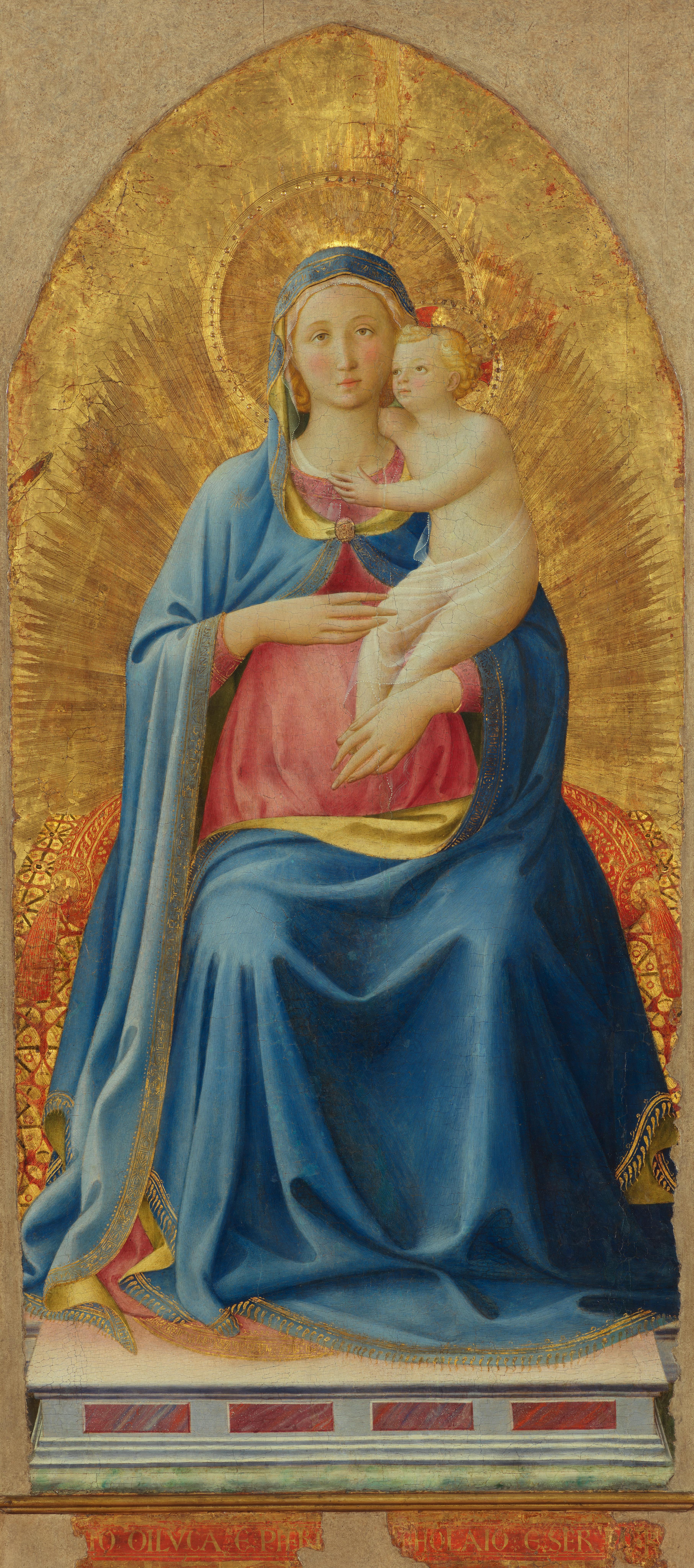Madonna and Child Enthroned with Angels
Guido di Pietro, then Fra' Giovanni Angelico known as Beato Angelico (Vicchio di Mugello (Fi), ca. 1395-Rome 1455)
The panel, which depicts the traditional theme of the Virgin Mary seated on a throne while holding her son Jesus, was the centerpiece of a polyptych destined to the Church of San Michele Arcangelo in Pontassieve. At the bottom there are fragments of an inscription that was recovered thanks to the transcription of a 19th-century scholar: "This panel was made by Berto and Simone di Francesco and Antonio di Luca and Piero di Nicholaio and Ser Piero and Bartolomeo di Betto da Filicaia in MCCCCXXXV in honour of God". The altarpiece was commissioned by the Florentine family da Filicaia, that had various properties in the Pontassieve area, as well as the patronage of the Church of San Michele Arcangelo. However, the reconstruction of the polyptych is still problematic, as the panel currently in the Uffizi was the only one left in the church since the 19th century.
The panel with the Virgin Enthroned is devoid of its original frame, but the pictorial surface features the shape of a pointed arch at the top, which, together with the gold-ground, indicates the persistence of gothic elements in the work. The frontality of the Virgin gives solemnity to the sacred image, which is softened by the tender embrace of the Child, according to the ancient Byzantine iconography of the Holy Mother of God 'Eleusa', that is, expressing tenderness. Even the throne seems to be unstructured beneath the lavish tapestries, but the marble step, typical of Renaissance style, and the skilful construction of the figure of the Virgin, with chiaroscuro passages defining the forms, contribute to give a sense of space. The child's fair skin seems to emanate light, thus suggesting a sense of softness. At the bottom, on either side of the step, the green fragments that can be seen are traces of the flowery meadow on which the throne was standing.
The execution of the da Filicaia polyptych, which dates back to 1435, slightly preceded the assignments that the Dominican friar Giovanni Angelico, at the time one of the most accomplished masters on the Florentine scene, received by the Medici family for the renovation of the church and convent of San Marco.
The painting has been preserved at the Uffizi since 1949, after being restored in the workshop of the Florentine Galleries where it had arrived in 1924. The church of San Michele Arcangelo in Pontassieve was completely destroyed by bombing in 1944 and rebuilt in its present form in 1947-1948.
A. Labriola, Beato Angelico a Pontassieve. Dipinti e sculture del Rinascimento fiorentino, a cura di A. Labriola, Firenze 2010, pp. 110-115;G. de Simone in Bagliori dorati. Il Gotico internazionale a Firenze 1375-1440, a cura di A. Natali, E. Neri Lusanna, A. Tartuferi, Firenze 2012, p. 170
